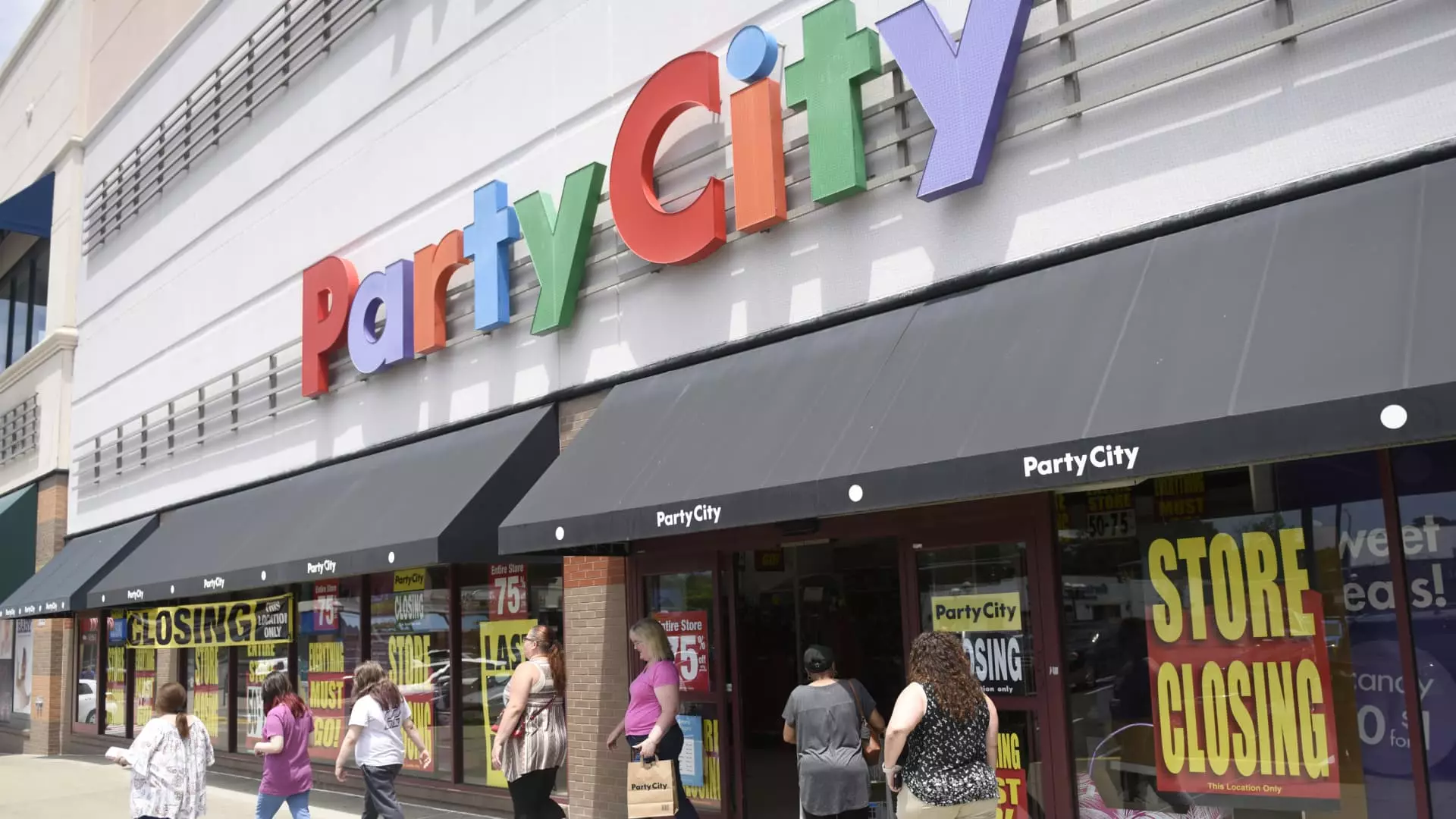The retail sector is undergoing a significant transformation that has manifested in record levels of store closures. As of 2024, major retailers like Party City and Macy’s have collectively closed an astounding 7,325 stores, marking the highest rate since the tumultuous onset of the COVID-19 pandemic in 2020. Industry analyses, such as those from Coresight Research, indicate that this trend is far from ending, with projections estimating that up to 15,000 stores could close throughout 2025. These closures draw attention to a broader issue within the industry—an increasingly polarized market where retail giants thrive while smaller, legacy brands struggle to keep their doors open.
The Bankruptcy Boom
One of the main contributors to the rapid closure of stores is a surge in retail bankruptcies, which jumped from 25 in 2023 to 51 in 2024. This bankruptcy wave is partially attributed to increased competitive pressures and shifting consumer behaviors. Retailers like Big Lots and The Container Store failed to adapt, resulting in a dramatic fallout. For instance, Big Lots recently announced that it would shut down all its stores after a failed sale, representing a significant loss for a chain that has long been a staple in discount retailing. Such closures highlight a critical reality in the retail landscape: failure to innovate and meet changing consumer demands can quickly lead to market obsolescence.
Despite an increase of 4% in holiday sales, consumer spending is not evenly distributed across the retail landscape. Businesses such as Amazon, Walmart, and Costco are increasingly capturing significant portions of consumer budgets, leaving smaller specialty retailers in the dust. Coresight’s data suggests a shift wherein consumer dollars are funneled to a select few industry giants while many smaller stores are left behind. Only a slight decline in sales can spell disaster for retailers with high fixed costs, such as rent and labor. Amid these dynamics, innovative responses to consumer demands are emerging as crucial for survival in a rapidly evolving retail ecosystem.
Legacy retailers face formidable challenges as they grapple with a rapidly changing market landscape. Companies like Macy’s are responding by closing approximately 150 stores by 2027 while exploring new formats and locations that better align with current consumer behavior. These adaptations include smaller, more strategically located stores that appeal to newly emerging shopping preferences. The challenge is exacerbated by the increasing popularity of e-commerce platforms, with new players like Shein and Temu posing competitive threats to traditional brick-and-mortar stores. These newer e-commerce platforms have rapidly gained consumer traction, drawing shopping traffic away from longstanding retailers in sectors such as party supplies and home goods.
As major retailers downsize or close stores, their absences in shopping malls and strip centers lead to a ripple effect, often forcing small shops and niche retailers to shutter as well. David Silverman from Fitch Ratings explains how the closure of anchor stores, like Macy’s, can have downstream effects, causing smaller retailers to suffer or leave the market entirely. This dynamic reshapes the retail environment, with traditional stores increasingly being replaced by non-retail establishments such as fitness studios, medical clinics, and even residential spaces. This shift reflects profound changes in shopping habits and local population distributions, catalyzed by the aftermath of the COVID-19 pandemic.
Amid the bleak landscape, there is a glimmer of hope: store openings in the U.S. increased significantly in 2024, amounting to 5,970—the highest number recorded by Coresight Research since it began tracking these statistics in 2012. Retailers like Dollar General and Aldi continue to expand, tapping into consumer demand for value-driven shopping experiences. Forecasts for 2025 project around 5,800 new store openings, indicating that while many stores will close, opportunities remain for those retailers willing to adapt and innovate.
The current state of U.S. retail illustrates a dramatic schism. While established chains confront existential crises marked by closures and bankruptcy, agile companies that cater to contemporary consumer preferences are thriving. The evolution is not just about survival; it is also a call to rethink retail strategies in an era dominated by e-commerce and changing consumer behaviors. As the industry continues to adapt, it will be essential for retailers, whether legacy or new entrants, to leverage insights and innovate to carve their niche in a challenging yet vibrant marketplace. Understanding these dynamics might just pave the path for emerging retailers looking to establish themselves in this new retail environment.

Leave a Reply